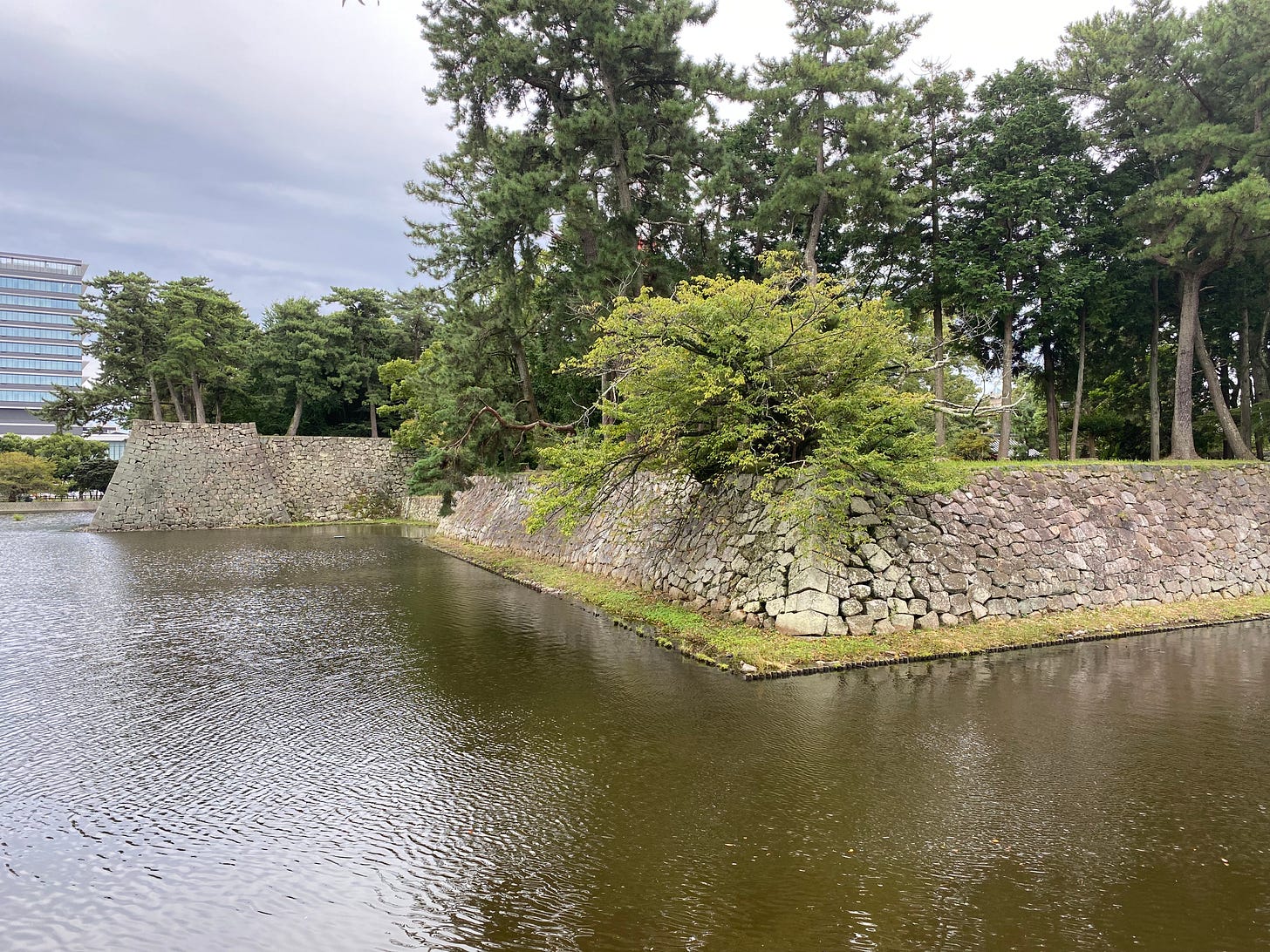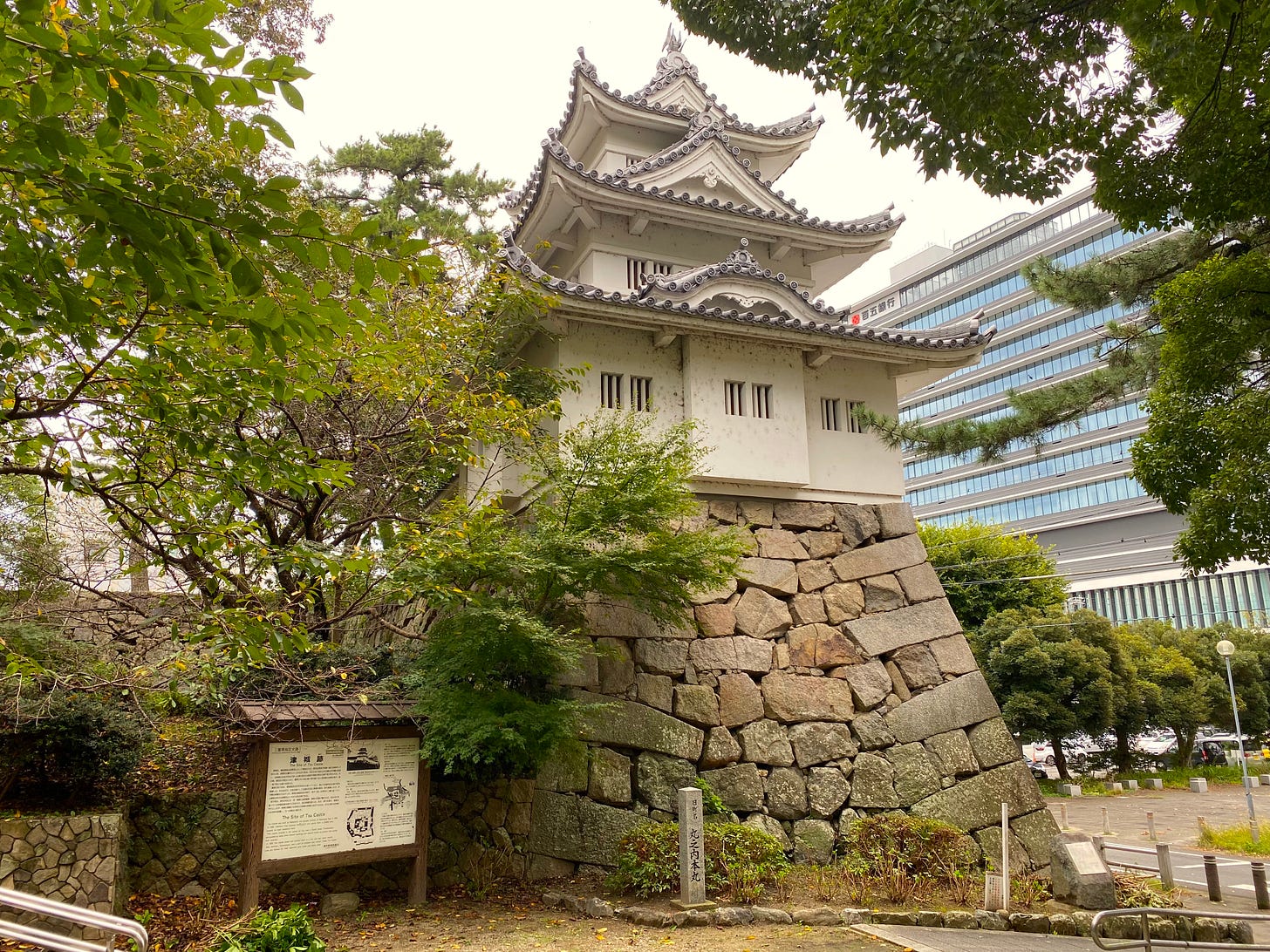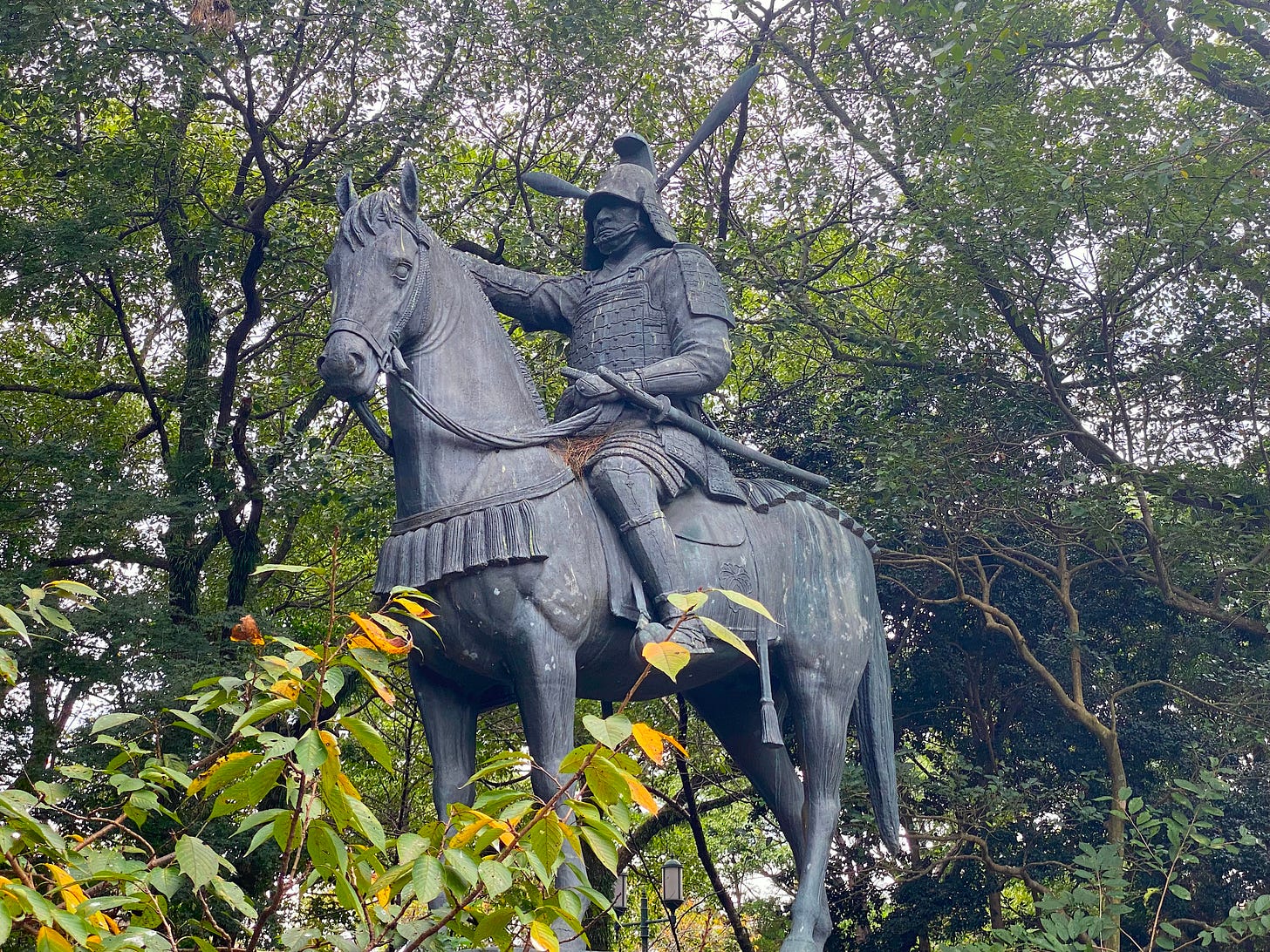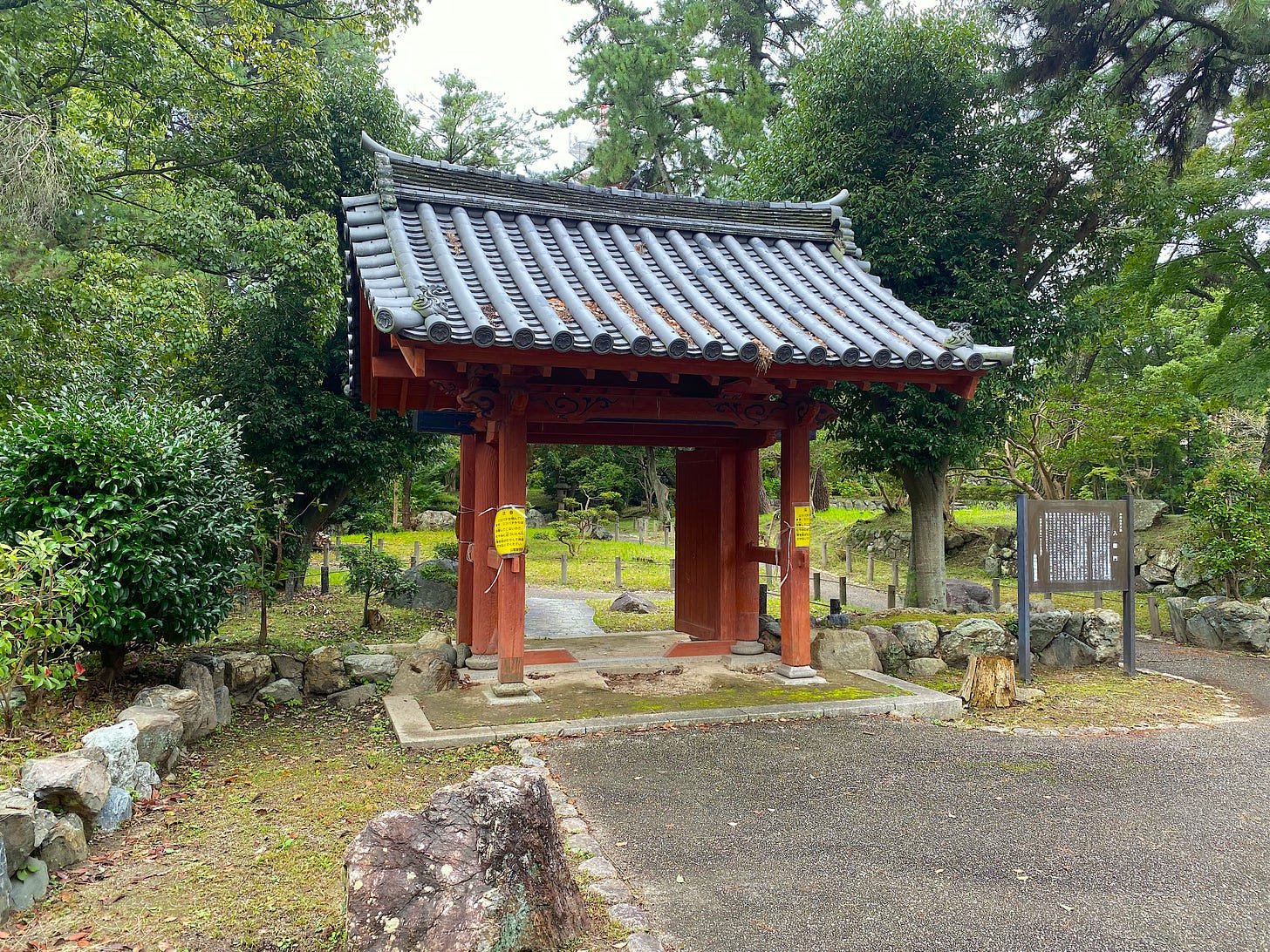Situated between Mie Prefecture’s Route 23 and the Tsu City Hall are the ruins of a once proud castle, Tsu Castle. For three hundred years between 1571 until 1871, Tsu Castle watched over the Ise region. For most of that time, it was under the control of the Toda Clan. The castle was originally founded by Oda Nobukane, younger brother of the first of the three unifiers of Japan, Oda Nobunaga, as a strategic stronghold in the Oda’s annexing of the Ise Peninsula.
Tsu was originally a lively and prosperous port town on the coast of modern-day Mie Prefecture, but a severe earthquake in August of 1498 sank the port, and the area never fully recovered its position as a major trading route. In 1568, Oda Nobunaga attempted to annex the Ise region, now Mie Prefecture, by force, and attacked the ruling Nagano clan’s retainer, Hosono Fujimitsu who had built a castle known as Ano, also known as Anotsu Castle.
Hosono was ensconced within Ano when Nobunaga’s forces attacked but were unable to bring the castle down. Later, peace between the clans was achieved, and Nobunaga’s younger brother, Nobukane was adopted by the Nagano clan. It was Nobukane who first constructed Ueno Castle around 1570, but soon realized it was too small, and so in 1571, work commenced on the larger Tsu Castle. During construction, the Nagashima Ikko Ikki, a series of uprisings involving the militant monks of the Ishiyama Hongan-ji Temples’ associated Gansho-ji monastery of Nagashima broke out. This prolonged war and Nobunaga’s attack on Echizen (in which Nobukane took part), meant the castle wasn’t completed until around 1580, when the five story keep — influenced by his brother’s Azuchi Castle — was finally built.
When Nobunaga was killed in the Honno-ji Incident of 1582, Nobukane’s forces came under the control of Toyotomi Hideyoshi, who had basically usurped his former master, Nobunaga’s power and lands. Nobukane and Hideyoshi later had a falling out over the planned invasion of Korea, and so in 1594 Nobukane was demoted from 150,000 koku, down to 3,600 koku, and transferred from Tsu to Tamba.

In his place, Hideyoshi installed Tomita Nobuhiro in Tsu Castle with 60,000 koku. Nobuhiro retired in 1599, and his son, Nobutaka, became lord of Tsu. The following year in the lead up to the decisive Battle of Sekigahara, Nobutaka would choose to support the Tokugawa clan, taking part in the attack on the Uesugi before returning to Tsu, and coming under attack himself from a large contingent of 30,000 under the Western forces allied Mori Hidemoto, Kikkawa Hiroie, Ankokuji Ekei, Chosokabe Morichika, and Natsuka Masaie. Tsu Castle was defended by just 1,700 samurai. So fierce was the fighting that even Lord Nobutaka’s wife in light armour took up arms, using a spear to fend off attackers. The attacking Western forces, concerned at the loss of life and excessive damage to the castle, offered terms of surrender.
Lord Nobutaka would temporarily retire to Mt. Koya, shave his head and enter the priesthood, before being offered an extra 20,000 koku from Ieyasu for his services at Sekigahara, bringing the Tomita back into service with 70,000 koku. In 1608, he would be offered Uwajima Castle in Ehime, Shikoku, and relocated there.
When Todo Takatora was awarded Tsu Castle in Ise, he immediately commenced improvements, and set about reconstructing the castle and its layout. For this reconstruction, Takatora once again returned to his tried and tested designs.
The long earthen bridge across the wide moats leading to the Otemon gates was constructed with two cranks along its length, preventing any attacking enemy from having a direct approach, and allowing the defenders a better chance at shooting any approaching attackers.
The main entrances were changed to the east and west positions, and three-story high yagura watchtowers were built on the northeastern and north-western corners. A total of 11 yagura and tamon surrounded Tsu Castle. On the southwestern corner and along the central western side, two-story yagura was erected.
Tsu Castle’s uchibori, inner moat was a wide 80 meters at the narrowest point, and between the moat along the base of the Nishi-no-maru stone walls and other sections were the inubashiri walkways around the stone wall base, common with Takatora’s Imabari and Sasayama Castles. These stone walls were straight and high as per Takatora’s artistry. The Honmaru was surrounded by corridor-like tamon yagura watchtowers, with east and west masugata gates leading to the Nishi-no-maru and the Higashi-no-maru. Although the stone foundations for the keep were constructed, a tower keep is believed never to have graced Takatora’s Tsu castle, however recently re-discovered maps have suggested otherwise.

Interestingly, despite being made in the relative peacetime of the early Edo period, the stone base of Tsu Castle’s Main keep was constructed in the older ranzumi style, in which large stones are roughly laid in a random pattern, but without sangizumi, the alternate interlocking of long stone blocks firming up the corners. This suggests that Takatora rushed to complete the castle as Tokugawa Ieyasu was ready to attack Osaka.
Tsu Castle’s Honmaru precinct was extended by 25 meters to the east and to the north. Tsu’s Honmaru was completely surrounded by strong tamon yagura. The castle’s stone walls below these tamon yagura too were very well constructed. Takatora lived in the Honmaru’s fine goten palace, complete with a Noh stage, and a small annex taken from Fushimi Castle, and now preserved in Tsu City’s Senju-ji Temple where it is used as a tea ceremony room.

Both the Ushitora Yagura and the Inui Yagura were the same size, each watchtower’s first floor measured 9.1 meters by 9.1 meters, the second floor 7.28 meters and the uppermost floor was 5.46 meters The tamon yagura connecting both the Ushitora and Inui Yagura was 5.46 meters wide, and 87.36 meters long. The Iga Yagura, Taiko Yagura and the Tsukimi Yagura too were the same size.
A new Honmaru was developed with new ishigaki stone walling built along the northern and eastern sides. On the northeastern and northwestern corners, large three-story yagura watchtowers were built, with tamon yagura running along the tops of the walls between the two towers.
Edo Castle and the Tokugawa’s Osaka Castle had moats 50 meters wide, while Tsu Castle’s northern inner moat was a most impressive 80 meters across. The southern-most moat is believed to have been around 100 meters wide, but as archeological excavations are yet to be carried out, it remains to be proven. Even then, the northern moat puts Tsu Castle in a position of being on par with Imabari as having the widest moats of all castles. The wide moats, and its southern access to the sea via the outer moat also place it in the category of being a rare example of a mizujiro, a water castle, suggesting that Takatora’s Tsu Castle was an even more formidable and stronger castle than his previous masterpiece, Imabari.

Takatora’s thinking was that the castle was no longer simply a military installation, its future role was that of an administrative center, a fortified town hall at the center of the domain.
In later years, he left command of the Tsu area to his son. Takatora’s descendants competently ruled the area from Tsu Castle for 263 years until the end of the Edo period. Tsu Castle, except for its’ stone walls and innermost moats, was demolished in 1871.
Tsu Castle’s ruins are now a city park. The tall ishigaki stone walls of Tsu Castle’s Honmaru and Nishi-no-maru remain in well preserved condition, as do parts of the water filled moats to the north and west. A reconstructed three-story Ushitora Yagura turret guards the entrance to the park. When it was reconstructed in 1958, certain features of the turret, such as extra roof gables were added to make it more visually appealing. Meiji period photographs taken before the castles’ destruction show the original turrets to be of a simpler design. A fine statue of a mounted Takatora can be found in the Honmaru.
Tsu City’s Town hall stands on the Ni-no-maru enclosure. Tsu City is currently considering plans to have parts of Tsu Castle, including various yagura and gates authentically reconstructed in the traditional manner.
For samurai history and castle buffs, Tsu Castle is a must see! Put this castle on your list,… it’s one castle not Tsu be missed!







